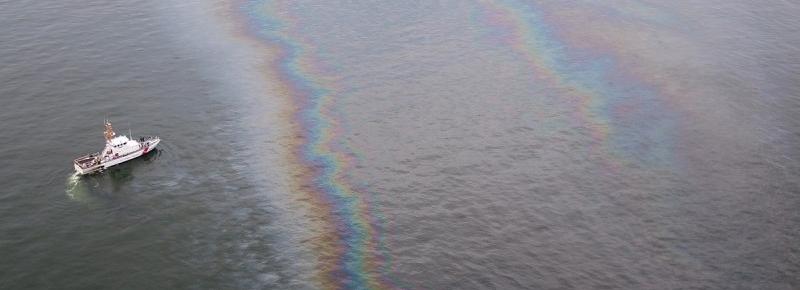 Seventeen years ago, Hurricane Ivan destroyed an oil-production platform in the Gulf of Mexico. The wells associated with the platform have been leaking ever since and may be one of the largest and longest-running offshore spills in US history.
Seventeen years ago, Hurricane Ivan destroyed an oil-production platform in the Gulf of Mexico. The wells associated with the platform have been leaking ever since and may be one of the largest and longest-running offshore spills in US history.
Now, the Department of Justice has announced an agreement in which Louisiana-based Taylor Energy will pay $43 million in civil penalties and damages for a leak that has been releasing oil since 2004. The settlement, representing all of Taylor’s remaining available assets, will liquidate the firm.
As reported by the NY Times, in 2008, Taylor Energy set up a $666 million fund to clean up the spill. They spent roughly one-third of the money to cap nine of the 25 wells that were damaged during the hurricane. But after doing so, the company said that the remaining 16 wells were too risky to address because they were buried under so much mud and debris, and unsuccessfully sued the Department of Interior to release the balance of its funds.
In 2018, we posted about the Coast Guard’s attempt to force Taylor Energy to contain and clean up the spill or face fines of $40,000 per day. (See Coast Guard Cracks Down on Major Oil Spill Which You Probably Never Heard Of.)
Taylor refused to clean up the rest of the spill or to pay the fines, disputing both the size of the leak and the extent of its responsibility for cleanup efforts. In response, the Coast Guard hired a private contractor to build and install a containment system to capture the majority of the leaking oil. Last year the government sent Taylor Energy a bill for $43 million to cover a year’s worth of removal costs.
The recent settlement requires Taylor Energy to dismiss its three pending lawsuits against the federal government. After court approval of the settlement, the company will be liquidated and will turn over any remaining assets to the federal government. The company has also been ordered not to interfere with the Coast Guard’s efforts to contain or remove oil from the spill site.
